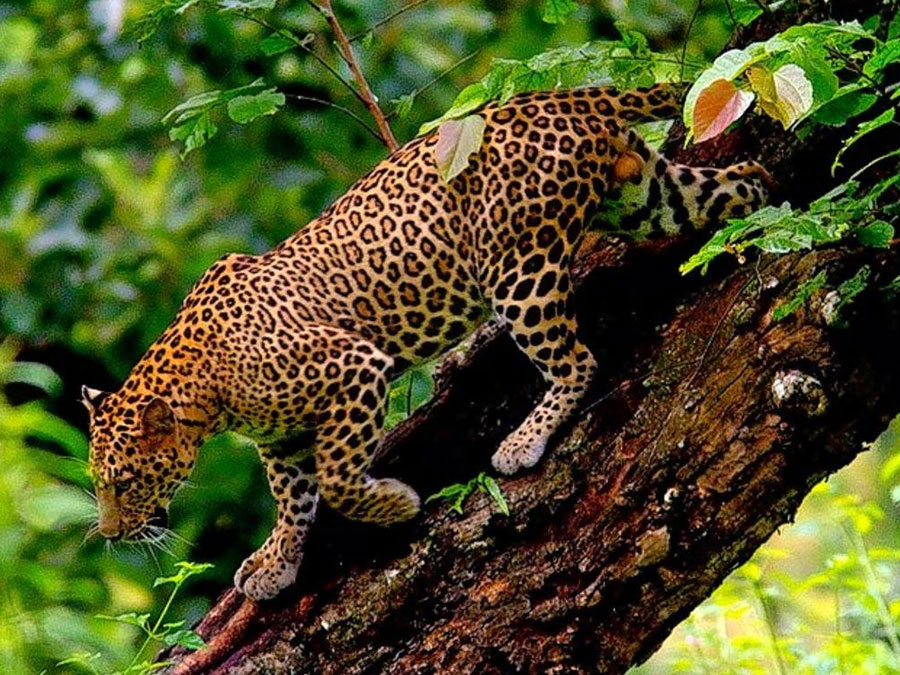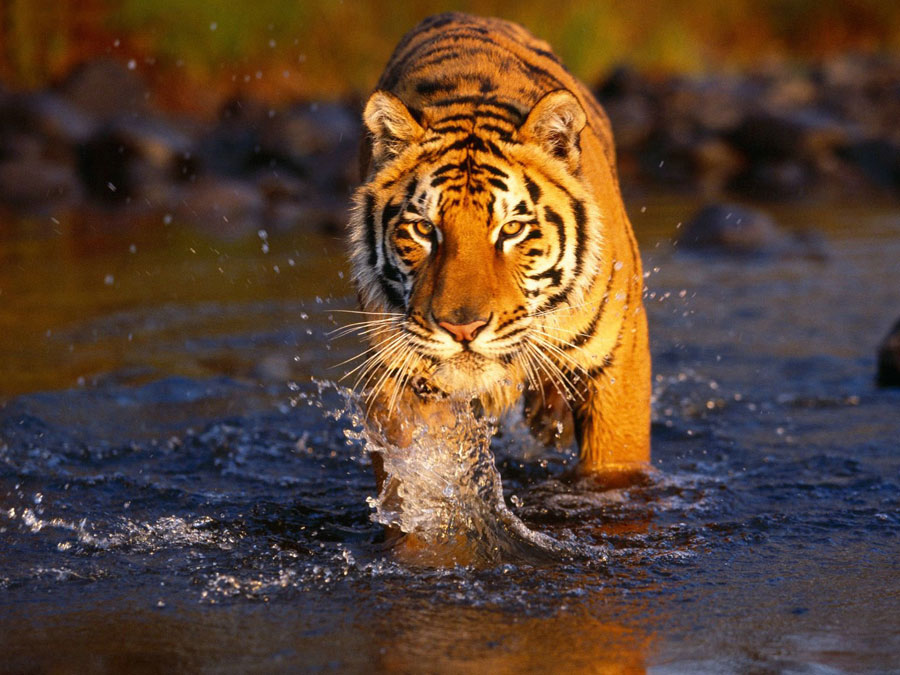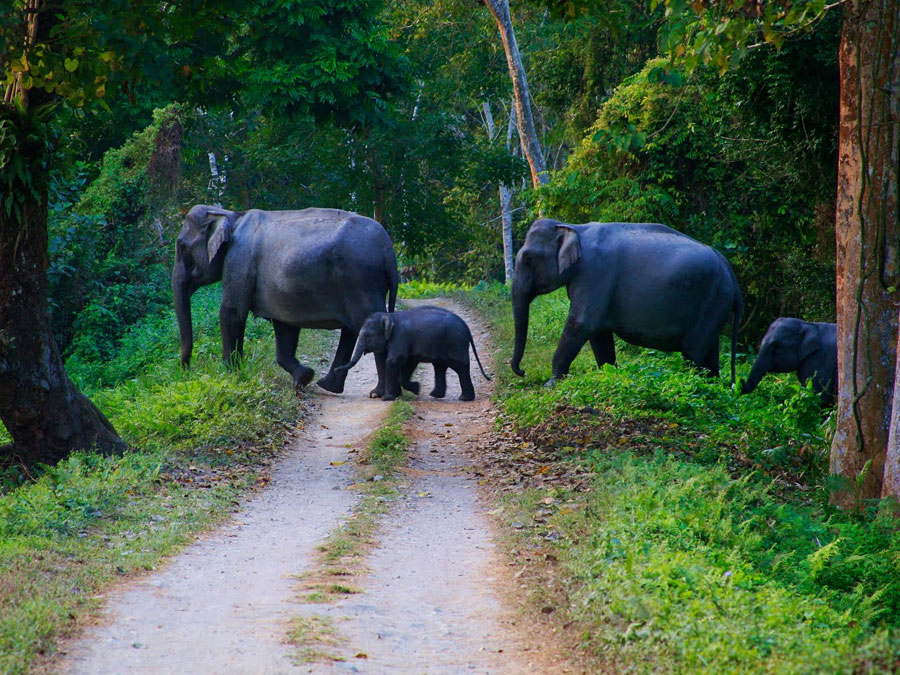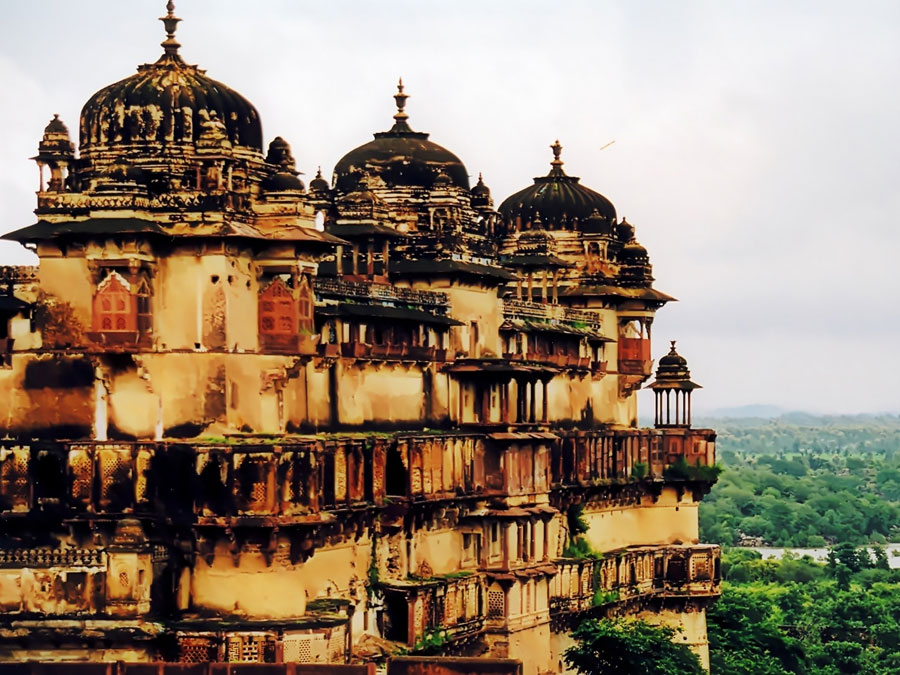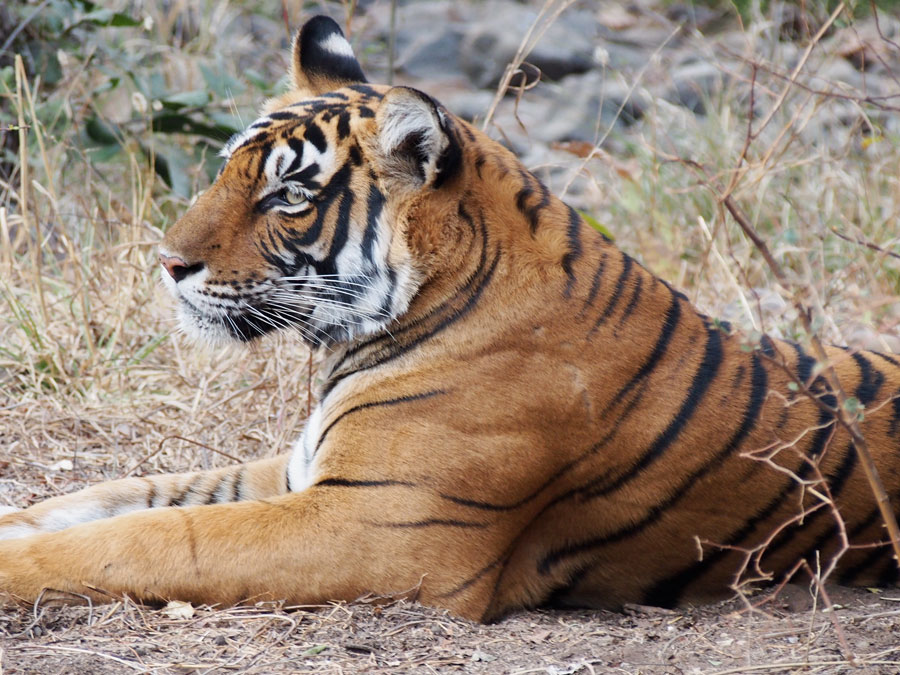
North India Wildlife Tour
Duration : 17 Days / 16 Nights
Route : New Delhi - Jaipur - Ranthambhore - Bharatpur - Agra - Umaria - Bandhavgarh - Kanha - Nagpur - Mumbai
Category : India wildlife Tours
-
Day 01 - Arrival New Delhi
Welcome to India!!
You will be received by one of the representatives of “Times India Travels” or your driver at the international airport and you will be assisted to your hotel. In the Hotel, the representative/ driver will provide your documents regarding the tour.
Overnight in Hotel.
Delhi is a bustling metropolis, which successfully combines the ancient with the modern. Its strategic location was the main reason that successive dynasties chose it as their seat of power. It is believed that the city of Indraprastha was founded around 5000 BCE from the Hindu mythological Mahabharata. Numerous monuments were built over several centuries by different rulers like Alauddin Khilji, Qutub-ud-din Aibak, Humayun, Tughlaqs, and Shah Jahan, who built the Walled City ShahJahanabad. Later in the first half of the 20th century, much of New Delhi was planned by Sir Edwin Lutyens. He laid out a grandiose central administrative area as a testament to British rule in India. The division in walled city & New Delhi also marks the division in lifestyles. Overnight at New Delhi hotel. -
Day 02 - New Delhi
Today we take a guided tour of Old Delhi, the 17th-century walled city of ShahJahanabad, We will visit the great Jama Masjid which is the principal mosque of Old Delhi. It was built in the year 1656 AD by the Mughal Emperor Shah Jahan. It is the best-known and largest mosque in India. Later we will walk down or take a rickshaw ride through Chandni Chowk. It is the old marketplace of ShahJahanabad and now it is a picturesque bazaar to reach Red Fort which was built by Shah Jehan in the year 1648.
In New Delhi, we visit Raj Ghat, the memorial to the Father of the Nation, Mahatma Gandhi. It is a simple black marble platform that marks the place of his cremation on 31 January 1948. Apart from this, we drive the Indian Gate, the Memorial Gate, built in the year 1931 to pay tribute to the Indian soldiers who died in the First World War and the Afghan Wars. The names of the soldiers martyred in these wars are inscribed on the walls. We will visit the President's House, built in the year 1931. Until 1950 it was known as Viceroy's House and served as the residence of the Governor-General of British India. We will also visit Humayun's Tomb, the memorial of Mughal Emperor Humayun, built in the year 1562. The complex is a World Heritage Site and the first example of this type of Mughal architecture in India. Also visit Qutub Minar which was builtin 1206 by Qutub-ud-din Aibek and is the tallest (72m) brick minaret in the world. It is an important example of Indo-Islamic Architecture. Qutub Minar & its monuments are mentioned as a UNESCO World Heritage Site. Overnight at New Delhi hotel. -
Day 03 - Jaipur
After breakfast drive to Jaipur, popularly known as the Pink City, the flamboyant & colorful capital of Rajasthan. With its rich and colorful past, tales of valor and bravery, it is now one of the most important heritage cities in India. The city was founded in the year 1728 by Maharaja Sawai Jai Singh II, the ruler of Ambar. It remains the only city in the world through nine rectangular regions, symbolizing the nine divisions of the universe.
Chokhi Dhani is optional.
Evening excursion to the Ethnic Village Resort, Chokhi Dhani Complex, 15 km from Jaipur. The ambience of the Rajasthani village is built on a sprawling ground and includes entertainment by folk dancers and musicians. Return to the hotel later.
-
Day 04 - Jaipur
Today we take a tour in Amber Fort, the palace complex that stands on this date which was started under the rule of Raja Man Singh. We ride an elephant to reach the fort on the hill, a great experience.
Later we visit City Palace, a perfect blend of Rajasthani and Mughal architecture. The center of the palace is a seven-storey building called Chandra Mahal, which has magnificent views of the gardens and the city. In addition, we will visit Jantar Mantar (Solar Observatory), an astronomical treasure house with solar equipment that gives accurate forecasts to date. We also visit Hawa Mahal (Palace of Winds), a five-storey structure of pink sandstone which was built in 1799. It was built so that veiled royal women could peer down the busy street market unseen by the world through its 593 stone Jharokha (mini windows). Overnight at Jaipur hotel.
-
Day 05 - Ranthambhore
After breakfast drive to Ranthambore National Park, bounded to the north by Banas River & to the Chambal River in the south. It is named after the historic Ranthambore Fort, which is located within the park. The park was established by the Government of India in the year 1955 as the Sawai Madhopur Sports Sanctuary and was declared as Project Tiger Reserve in the year 1973. It became a National Park in the year 1980 & later in the year 1991 the tiger reserve was expanded to include Sawai Man Singh & Keladevi sanctuaries. The total area became 1334 km. It is famous for its tiger population. Other Major wild animals found in the national park include the tiger, leopard, nilgai, dhole, wild pig, sambar, chital & the gaur. It is also home to a wide variety of trees, plants, birds & reptiles. In the evening, we take a Jeep safari to try luck in spotting the Tigers. Overnight stay at Ranthambore Wildlife Resort.
-
Day 06 - Ranthambhore
Early morning today before Breakfast, we take a Jeep Safari to the Tiger Reserve, since becoming one of the original areas under Project, the park has recovered much of its natural beauty & dry deciduous forest has been restored.
Later we will visit the Ranthambore Fort which was founded by the Chauhan Rajputs in the year 944. After the defeat of the Chauhan king Prithviraj III by Muhammad of Ghori in the year 1192. It led by Govinda Raja, grandson of Prithviraj became the center of Chauhan resistance to the expanding the Sultanate of Delhi. Later after many battles & rulers, it came in the hands of Mughal Emperor Akbar in the year 1559. This fort was given to the Kachhwa Maharajas of Jaipur in the 17th century and it remained part of the Jaipur state till Indian independence. The area around the fort became a hunting ground for the Maharajas of Jaipur. Overnight stay at Ranthambore Wildlife Resort.
-
Day 07 - Bharatpur
After morning safari, we drive down to Bharatpur, founded by Maharaja Suraj Mal in the year 1733. It was at one time an impregnable, well-fortified city, and the capital of a kingdom ruled by the Jat Maharajas. The trio of Bharatpur, Dholpur, and Deeg has played a very important role in the Jat history of Rajasthan.
The sanctuary was earlier known as Bharatpur Bird Sanctuary and is now known as Keoladeo National Park. The name Keoladeo is derived from the name of an ancient Hindu temple dedicated to Lord Shiva in the central area of the sanctuary, while the Hindi word 'Ghana' means dense, dense areas. This is a magnificent park having one of the World's greatest & most important heronries. It is situated at the confluence of Gambhir & Banganga Rivers in Bharatpur district. Now a World Heritage site, this former duck-hunting reserve of the Maharajas is among the major wintering areas for large numbers of aquatic birds from Siberia, Turkmenistan, and Afghanistan. There are around 364 species of birds, including the rare Siberian Crane in the park. Overnight at Bharatpur Wildlife Resort.
-
Day 08 - Agra via Fatehpur Sikri
Early morning we do birds viewing by cycle rickshaw along with a naturalist.
Later we drive to Agra, en-route visiting Fatehpur Sikri (Ghost Capital), the political capital of India's Mughal Empire under Akbar's reign, from the year 1571 until 1585, when it was abandoned, ostensibly due to lack of water. We visit Emperor Akbar's Residential complex, Mosque & Tomb of Salim Chisti.
Further, we continue our drive to Agra, beautifully situated on the banks of the river Yamuna. It achieved prominence as the capital of the Mughal Emperors from the year 1526 to 1628, remains a major tourist destination because of its many splendid Mughal-era monuments, most notably the Taj Mahal, Agra Fort & Fatehpur Sikri, all three are UNESCO World Heritage sites. overnight stay at Agra hotel.
-
Day 09 - Agra - Umaria (By Overnight Train No. 8478 - 1540 / 0525 Hrs)
Today we visit Taj Mahal (remains closed on Friday), symbol of eternal love, which stands on the banks of the River Yamuna. It was built by the 5th Mughal emperor, Shah Jehan in the year 1631 in memory of his wife, Mumtaz Mahal. It was completed in 22 years. Further, we will visit Agra Fort which was taken over in the late 16th century from the Lodhis by the Mughal Emperor Akbar. The Fort can be more precisely described as a walled palatial city. It was built from red sandstone, often inlaid with white marble & intricate decorations. Afternoon we take an overnight train to Umaria.
-
Day 10 - Umaria drive to Bandhavgarh National Park (35 Kms)
Morning, we arrive in Umaria and drive to Bandhavgarh National Park, located in the Umaria district of Madhya Pradesh, India. It was declared a National Park in the year 1968. It's a small National Park, compact, yet full of game. The density of the tiger population here is the highest known in India. This is also a white tiger country. These have been found in the old state of Rewa for many years, the last known captured was in 1951.
There are also 39 caves in the Bandhavgarh Fort. The oldest cave is from the 1st century. Several caves carry inscriptions in Brahmi script & some caves have embossed figures such as those of tiger, pig, elephant & horseman. Badi Gufa, the largest cave, has a broad entrance, nine small rooms & several pillars. It has been dated back to the 10th century. The cave appears to be primitive lacking the elaborate statues & carvings seen in the caves of the Buddhist period.
Later in the afternoon, we take a Jeep safari. Overnight stay at Bandhavgarh Wildlife Resort.
-
Day 11 - Bandhavgarh National Park
Today morning we take an Elephant Safari in the Jungle, a most memorable experience. Also, enjoy good wild photography in the jungle from an elephant's back. Later visit the Bandhavgarh Fort & Caves. Also, take a Jeep Safari in the afternoon. Overnight stay at Bandhavgarh Wildlife Resort.
-
Day 12 - Bandhavgarh National Park
Today we take morning and afternoon Jungle Safaris and join the activities at the resort.
Overnight Wildlife Resort - Bandhavgarh (B, L, D)
-
Day 13 - Kanha National Park
After breakfast drive to Kanha National Park, part of Project Tiger, located in Madhya Pradesh. In the 1930s, the Kanha area was divided into two sanctuaries, Hallon & Banjar. It was created in the year 1955.
The lowland forest is a mixture of sal & other trees, interspersed with meadows. The highland forests are completely different. You can also see a very good looking Indian ghost tree in the dense. Kanha is home to around 22 species of mammals & about 300 species of birds. Commonly observed mammals are the Wild Boar, Common Grey Langur, Chowsingha, Chital, Barasingha, and Sambar or Swamp deer (this is the hard ground swamp deer, found only in Kanha). One can also find leopards, Indian wild dog, and the Sloth bear. Very rarely seen are the Indian wolves that live in the far east of the park. It comes out after dark which is not a visiting hour. The rare Nilgai (blue bull)can also be found in Kanha. Overnight stay at Kanha Wildlife Resort.
-
Day 14 - Kanha National Park
Today you will go for Morning and Afternoon Jungle Safaris and join the activities at the resort. Overnight stay at Kanha Wildlife Resort.
-
Day 15 - Kanha drive to Nagpur (270 Km / 6 Hrs) - Mumbai (Flight)
Take a morning game safari and drive down to Nagpur to board flight for Mumbai.
Mumbai is an archipelago of seven islands. The artifacts found that these islands were inhabited since the Stone Age and evidence of human habitation was found in 250 BCE. In the 3rd century BC, the islands formed part of the Maurya Empire. In 1534, Portuguese appropriated the islands from the king of Gujarat later ceded to Charles II of England in 1661, as dowry for Catherine de Braganza. These islands were in turn leased to the British East India Company in 1668. Overnight stay at Mumbai hotel.
-
Day 16 - Mumbai
First, we visited the Gateway of India. It was built to commemorate the visit of King George V in 1911. Later we enjoy an hour's boat ride to the tranquil forested island of Elephanta, one of the most atmospheric places in Bombay. The chief attraction of the island is its unique cave temple whose Shiva sculpture is a fine example of Hindu architecture. In the afternoon visit, Jehangir Art Gallery, the Victoria Terminus, the Prince of Wales Museum, Hanging Gardens, Jain Temple and Mani Bhavan – Gandhi's Bombay base between 1917 & 1934, this house is now a permanent memorial to the Mahatma. Overnight stay at Mumbai hotel.
-
Day 17 - Depart Mumbai
Today we will transfer you to the International airport to board your flight for further travel.
Every Itinerary is just given for an idea; it can be customized as per your wish and convenience!!

